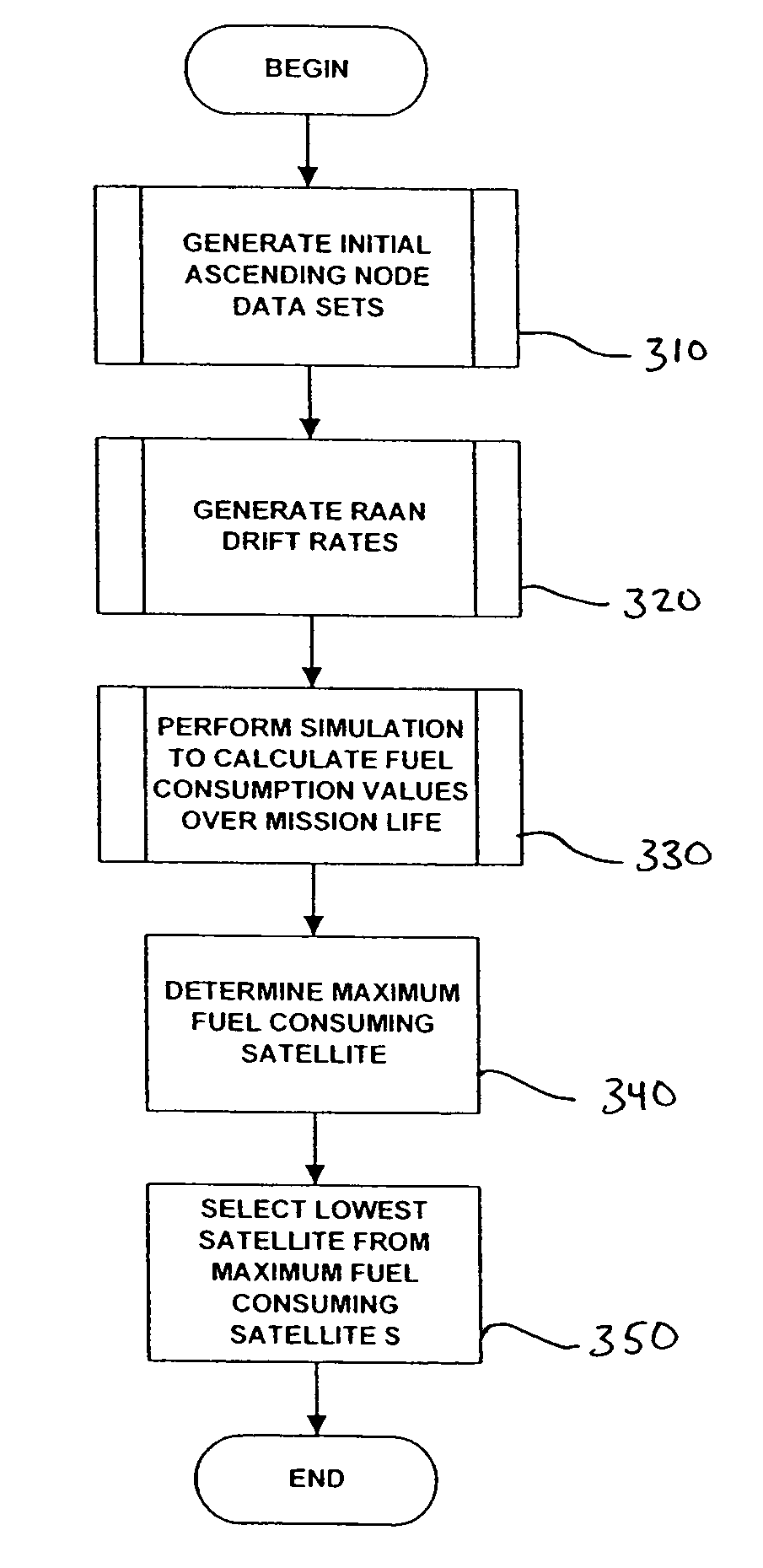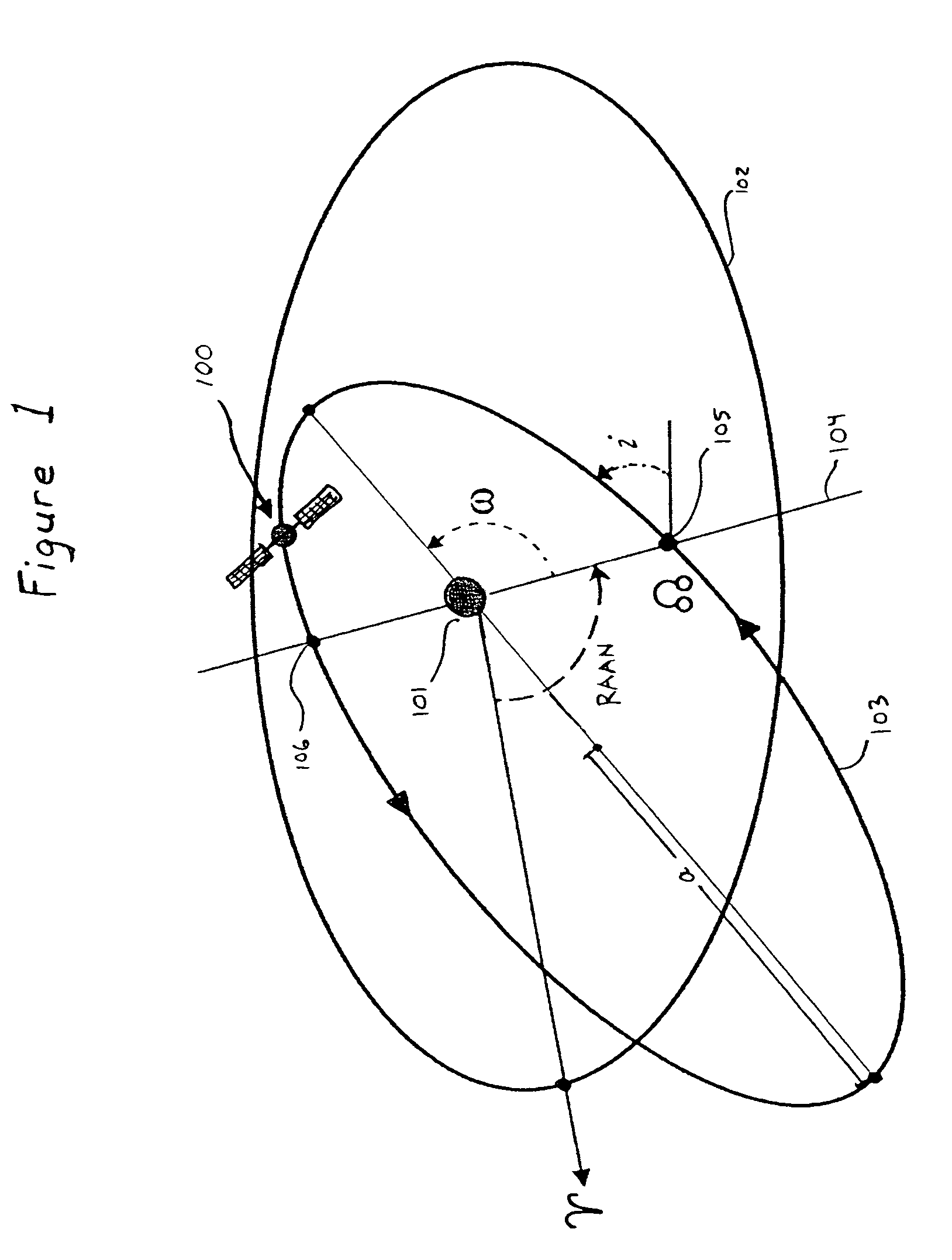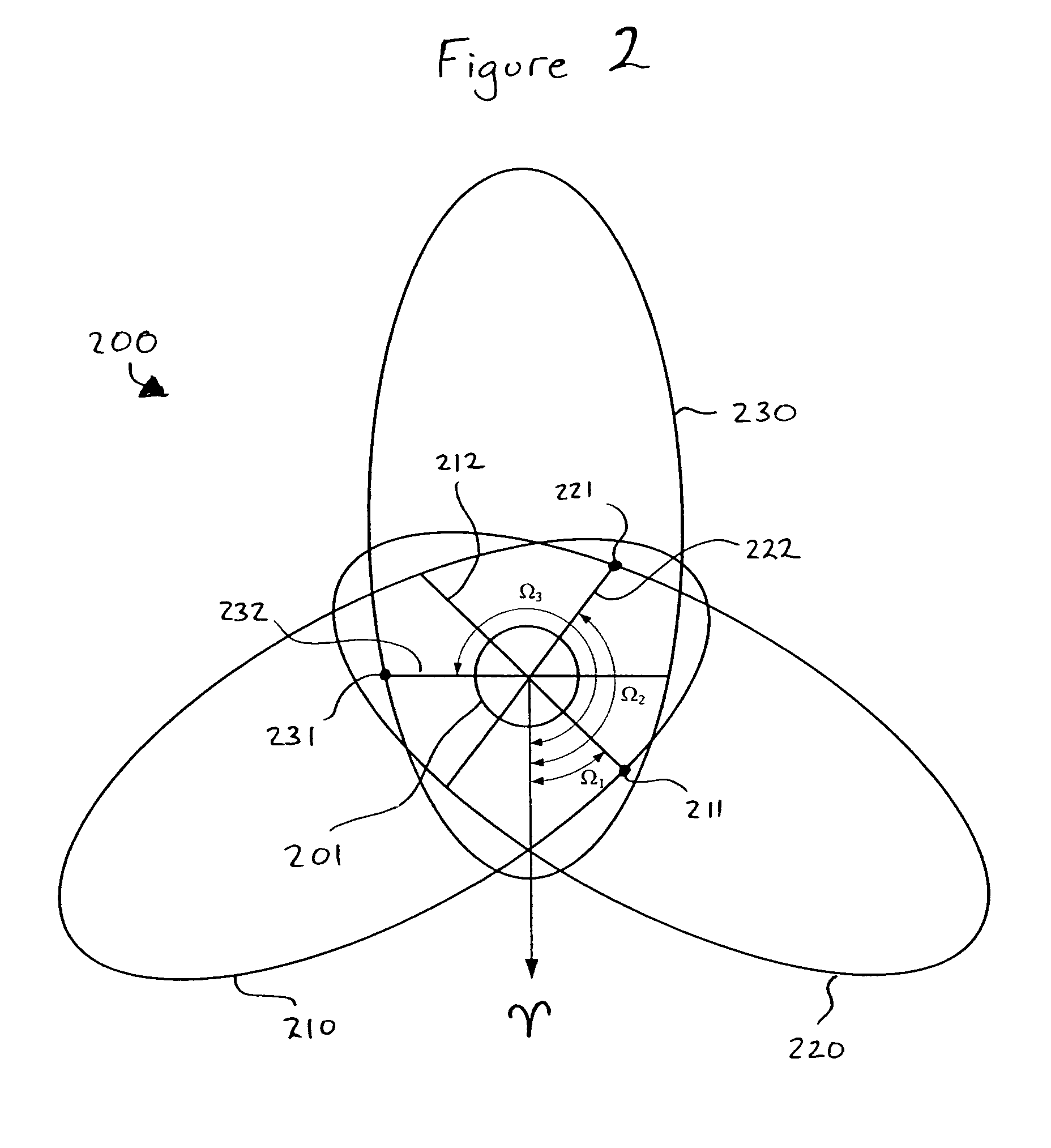Stationkeeping optimization for inclined elliptical satellite orbit constellations
a satellite orbit and constellation technology, applied in the field of satellite constellations, can solve the problems of tend to lose their fixed angular separation, and achieve the effects of reducing the value of fuel consumption, and reducing the cost of fuel consumption
- Summary
- Abstract
- Description
- Claims
- Application Information
AI Technical Summary
Benefits of technology
Problems solved by technology
Method used
Image
Examples
Embodiment Construction
[0025]In the following detailed description, numerous specific details are set forth to provide a full understanding of the present invention. It will be apparent, however, to one ordinarily skilled in the art that the present invention may be practiced without some of these specific details. In other instances, well-known structures and techniques have not been shown in detail to avoid unnecessarily obscuring the present invention.
[0026]A highly elliptical orbit (“HEO”) is illustrated in FIG. 1. The orbit 103 of satellite 100 is inclined at angle of inclination i above the equatorial plane 102 of Earth 101. The intersection of orbit 103 and equatorial plane 102 defines the line of nodes 104, which connects the ascending node 105 and the descending node 106 of orbit 103. Orbit 103 is further uniquely specified by its argument of perigee ω, its semi-major axis α, its eccentricity e and the right ascension of its ascending node (“RAAN”), measured from the vernal equinox γ. If orbit 10...
PUM
 Login to View More
Login to View More Abstract
Description
Claims
Application Information
 Login to View More
Login to View More - R&D
- Intellectual Property
- Life Sciences
- Materials
- Tech Scout
- Unparalleled Data Quality
- Higher Quality Content
- 60% Fewer Hallucinations
Browse by: Latest US Patents, China's latest patents, Technical Efficacy Thesaurus, Application Domain, Technology Topic, Popular Technical Reports.
© 2025 PatSnap. All rights reserved.Legal|Privacy policy|Modern Slavery Act Transparency Statement|Sitemap|About US| Contact US: help@patsnap.com



